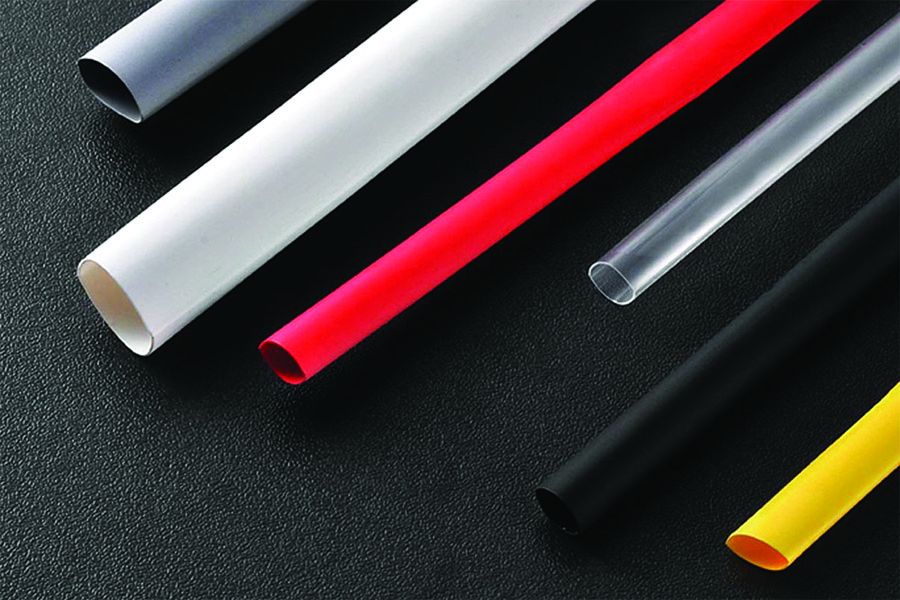
If you’re responsible for purchasing components for your company's electrical or electronic systems, you may have come across the term "heatshrink."
In this article, we'll provide an overview of what heatshrink is, its uses, the different types available and other key purchasing considerations.
What is Heatshrink?
Heatshrink is a type of tubing that shrinks when exposed to heat, forming a tight seal around wires, cables, or other components.
It is commonly used in electrical and electronic applications to provide insulation, strain relief, and protection against moisture and other environmental factors.
What is Heatshrink Used For?
Heatshrink is used to cover and protect wires, cables, and other components in electrical and electronic systems.
It can provide insulation and strain relief, protecting against damage and extending the life of the system. Heatshrink can also provide a neat and tidy appearance to the system, making it easier to identify and troubleshoot any issues that may arise.
Heatshrink Tubing
This is the most common type of heatshrink and is used to cover and protect individual wires and cables. It’s available in a range of sizes and colours, including clear, black, white, and red.
Heatshrink Sizes
Heatshrink tubing is available in a range of sizes to fit various wire and cable diameters. The most common sizes range from 1/16 inch to 4 inches in diameter.
It’s important to choose the correct size of heatshrink to ensure a secure and tight seal around the component.
Heatshrink Colors
Heatshrink tubing and tape are available in a range of colours to help identify wires and cables and to provide a neat and tidy appearance to the system.
Clear heatshrink is also available, allowing visibility of the underlying components while still providing protection and insulation.
Key purchasing considerations
When purchasing heatshrink for your company's electrical and electronic systems, there are several key considerations to keep in mind. Here are some of the most important factors to keep in mind;
- Type of Application - The type of application will determine the type of heatshrink needed. Consider whether the heatshrink will be used for insulation, strain relief, or protection against moisture and other environmental factors.
- Different types of heatshrink are designed for specific applications, so it is important to understand the exact purpose.
- Size - Heatshrink is available in various sizes to fit different wire and cable diameters. It is important to select the correct size of heatshrink to ensure a secure and tight seal around the component.
- Material - Heatshrink is made from various materials, including polyolefin. The material used will impact the heatshrink's durability, flexibility, and resistance to environmental factors.
- Shrink Ratio - The shrink ratio refers to the percentage by which the heatshrink will shrink when exposed to heat. The shrink ratio can range from 2:1 to 6:1, depending on the type of heatshrink.
- It’s important to choose a heatshrink with the appropriate shrink ratio for your application.
- Colour - Heatshrink is available in various colors, including black, white, red, and clear. The color chosen may be dictated by industry standards or personal preference.
- Operating Temperature Range - The operating temperature range refers to the range of temperatures that the heatshrink can withstand without degrading or melting. It’s important to choose a heatshrink that can operate within the temperature range of the application.
- Regulatory Compliance - Depending on the industry and application, certain regulatory standards may need to be met. It’s important to ensure that the heatshrink chosen meets any relevant regulatory requirements.
In conclusion, when purchasing heatshrink, it’s important to consider the type of application, size, material, shrink ratio, colour, operating temperature range, and regulatory compliance.
By considering these factors, you can ensure that the heatshrink chosen provides the necessary insulation, strain relief, and protection to your company's electrical and electronic systems
If you’d like some advice on what heatshrink to choose, phone NPA today on (08) 8268 2733 or browse our online store here to see our extensive range.

